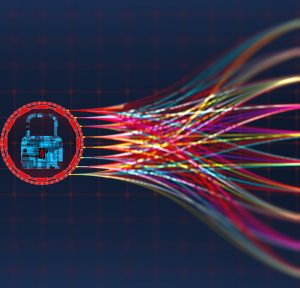 From the frontiers of content creation, we bring news in the longstanding war between man and machine. Or, in this particular case, animators versus software. Researchers from the University of Illinois Urbana-Champaign, Allen Institute for Artificial Intelligence, and the University of Washington are developing artificial intelligence software, dubbed “Composition, Retrieval and Fusion Network” (or CRAFT for short), that allows a user to generate a new video scene composed of graphic elements extracted from a library of preexisting video scenes by simply typing out a description of the new scene (e.g., “Fred is wearing a blue hat and talking to Wilma in the living room. Wilma then sits down on a couch.”). See here for those that prefer academic papers and here for those that prefer videos.
From the frontiers of content creation, we bring news in the longstanding war between man and machine. Or, in this particular case, animators versus software. Researchers from the University of Illinois Urbana-Champaign, Allen Institute for Artificial Intelligence, and the University of Washington are developing artificial intelligence software, dubbed “Composition, Retrieval and Fusion Network” (or CRAFT for short), that allows a user to generate a new video scene composed of graphic elements extracted from a library of preexisting video scenes by simply typing out a description of the new scene (e.g., “Fred is wearing a blue hat and talking to Wilma in the living room. Wilma then sits down on a couch.”). See here for those that prefer academic papers and here for those that prefer videos.
Crafting Blockchain Patent Claims to Avoid Enforcement Pitfalls and Maximize Potential Damages
 As we approach 2020, distributed ledger technologies (DLT) appear likely to have a far-reaching, comprehensive impact on our global economy. But core components of that economy—intellectual property rights in particular—sit in tension with DLT. Copyright owners learned this lesson with the advent of BitTorrent. Patent owners will face similar threats from DLT-based computing platforms executing programs referred to as “smart contracts.” To date, less than 500 U.S. patents have issued with the term “blockchain” in a claim, and none appear to have been litigated. As such, many nuances of DLT patent enforcement have not yet manifested. Nonetheless, even a cursory review of current case law reveals the road to a decentralized utopia is laden with patent-law potholes.
As we approach 2020, distributed ledger technologies (DLT) appear likely to have a far-reaching, comprehensive impact on our global economy. But core components of that economy—intellectual property rights in particular—sit in tension with DLT. Copyright owners learned this lesson with the advent of BitTorrent. Patent owners will face similar threats from DLT-based computing platforms executing programs referred to as “smart contracts.” To date, less than 500 U.S. patents have issued with the term “blockchain” in a claim, and none appear to have been litigated. As such, many nuances of DLT patent enforcement have not yet manifested. Nonetheless, even a cursory review of current case law reveals the road to a decentralized utopia is laden with patent-law potholes.
If Videogames and Apps Are Addictive, Should Designers Worry about Potential Legal Liability?
 What do videogames, cigarettes and slot machines have in common? They’re all addicting, according to the World Health Organization (WHO). Since addiction and legal liability can sometimes go hand in hand, game designers (and app developers) would do well to pay attention whenever a new habit or hobby looks like it might be deemed harmful.
What do videogames, cigarettes and slot machines have in common? They’re all addicting, according to the World Health Organization (WHO). Since addiction and legal liability can sometimes go hand in hand, game designers (and app developers) would do well to pay attention whenever a new habit or hobby looks like it might be deemed harmful.
California Governor Signs into Law the California Consumer Privacy Act of 2018
Our colleagues Cathie Meyer and Amy Pierce have published a Client Alert titled California Enacts Mini-GDPR Effective January 1, 2020. Under the new law, covered businesses will need to update policies and procedures for responding to customer inquiries about collection, use, sale and disclosure of customers’ personal information or face stiff enforcement actions. Takeaways from the Client Alert include:
- The California Consumer Privacy Act of 2018 provides consumers with broad rights to control use of their personal information by covered businesses.
- Covered businesses will need to review and revise their existing privacy policies to make the required disclosures and to provide two methods for customers to inquire about use of their personal information.
The new law is effective January 1, 2020.
When Do the Perils of Programmatic Advertising Undermine Its Value?
 #FakeNews is hurting more than political campaigns. Companies’ hard-earned reputations may be on the line when their ads pop up next to fake news stories and offensive YouTube videos.
#FakeNews is hurting more than political campaigns. Companies’ hard-earned reputations may be on the line when their ads pop up next to fake news stories and offensive YouTube videos.
Last year, major brands found their ads appearing in videos promoting extremist views and hate speech. JPMorgan Chase learned that it was advertising on a fake news site called Hillary 4 Prison. The ad ran under a headline claiming that actor Elijah Wood revealed “the horrifying truth about the Satanic liberal perverts who run Hollywood” (talk about bad publicity).
The Selfish Side of Self-Reporting: Should We Trust the Numbers Behind Music Streaming?
 Music consumers love streaming services. The data surrounding subscriptions and revenue tells us so. Largely self-reporting systems, however, have made it more complicated to quantify that success. Can we trust companies to embrace transparency when their own interests rely so much on the numbers they are reporting?
Music consumers love streaming services. The data surrounding subscriptions and revenue tells us so. Largely self-reporting systems, however, have made it more complicated to quantify that success. Can we trust companies to embrace transparency when their own interests rely so much on the numbers they are reporting?
News of Note for the Internet-Minded – 6/5/18 – Ancient IP disputes and Algorithm Testing
In this roundup, some of your favorite initialisms (AI, IP, TOS) come out to play while stories about government agencies and social media access call into question whether such access is a two-way street.
- There’s a wiki for terms of service agreements. (Arielle Pardes, Wired)
- Qualcomm introduces its first chip built for augmented and virtual reality. (Jacob Kastrenakes, The Verge)
- Microsoft’s HoloLens guides the blind through complicated buildings. (Rachel Metz, MIT Technology Review)
- 23andMe sues Ancestry over some very old intellectual property. (Megan Molteni, Wired)
- Law enforcement officials continue to push for more access to social media data. (Halley Freger, ABC News)
- YouTube stars criticize the platform for testing an algorithm at their expense. (Chris Foxx, BBC.com)
- Softback prepares to scale up its robotics business. (Parmy Olson, Forbes)
- PUBG files an infringement suit against Fortnite in South Korea. (Yuji Nakamura and Sam Kim, Bloomberg News)
- Apple introduces new controls to help users maintain screen-time/life balance. (Sarah Perez, TechCrunch)
- The city of Colorado Springs ventures briefly into a gray area as it blocks multiple users on social media accounts. (Anthony Prosceno/Tony Keith, KKTV 11News)
The King and IP: A Copyright Tussle between LeBron’s Uninterrupted and the University of Alabama
 Let’s talk shop. With LeBron James. Sounds cool right? That’s what James and his partner Maverick Carter thought when their entertainment company Uninterrupted developed The Shop. On The Shop, James and his friends, business associates, and various celebrity figures banter while getting their hair cut. Uninterrupted aired two episodes of the series with the first episode, (which premiered during the 2017 NBA Finals), garnering roughly four million views across Uninterrupted.com and ESPN’s YouTube channel.
Let’s talk shop. With LeBron James. Sounds cool right? That’s what James and his partner Maverick Carter thought when their entertainment company Uninterrupted developed The Shop. On The Shop, James and his friends, business associates, and various celebrity figures banter while getting their hair cut. Uninterrupted aired two episodes of the series with the first episode, (which premiered during the 2017 NBA Finals), garnering roughly four million views across Uninterrupted.com and ESPN’s YouTube channel.
The Dangers of Training Neural Networks with Phone Calls
 If you haven’t seen Sundar Pichai’s presentation on Google Duplex, watch it. The technology is fascinating.
If you haven’t seen Sundar Pichai’s presentation on Google Duplex, watch it. The technology is fascinating.
Google is developing software that can assist users in completing specific tasks such as making reservations by telephone. The software uses anonymized phone conversations as the basis for its neural network and in conjunction with automated speech recognition and text-to-speech software can have independent phone conversations with other people. Incredibly, the software requires no human interaction—at least by the user requesting the service—to complete its task. The result is that you can task the software to setup a haircut appointment for you, or book a table at a restaurant where it is difficult to get reservations, with no further input needed. It can also work with different scheduling options if your preferred time is not available. And importantly, the conversations seem natural—it is very difficult to tell that one of the participants in the conversation is a computer.
Who Is Ultimately in the Driver’s Seat with Autonomous Vehicles?
 When Eddie Rabbitt sang “Drivin’ My Life Away” in 1980, he was chronicling the life of a roadie, of a life spent behind the wheel. At the time, autonomous driving vehicles were still a distant speck on the horizon of the information highway. Today, we are on the cusp of a revolution that offers a near future where no one will have to spend his or her life behind a wheel. As always, the future carries new concerns, dangers and legal developments. We have already seen our first accidents and fatalities related to autonomous driving, and the regulatory and liability landscape is quickly setting context for this new technology—twenty-two states and Washington, D.C., have enacted legislation related to autonomous vehicles (with more pending).
When Eddie Rabbitt sang “Drivin’ My Life Away” in 1980, he was chronicling the life of a roadie, of a life spent behind the wheel. At the time, autonomous driving vehicles were still a distant speck on the horizon of the information highway. Today, we are on the cusp of a revolution that offers a near future where no one will have to spend his or her life behind a wheel. As always, the future carries new concerns, dangers and legal developments. We have already seen our first accidents and fatalities related to autonomous driving, and the regulatory and liability landscape is quickly setting context for this new technology—twenty-two states and Washington, D.C., have enacted legislation related to autonomous vehicles (with more pending).





